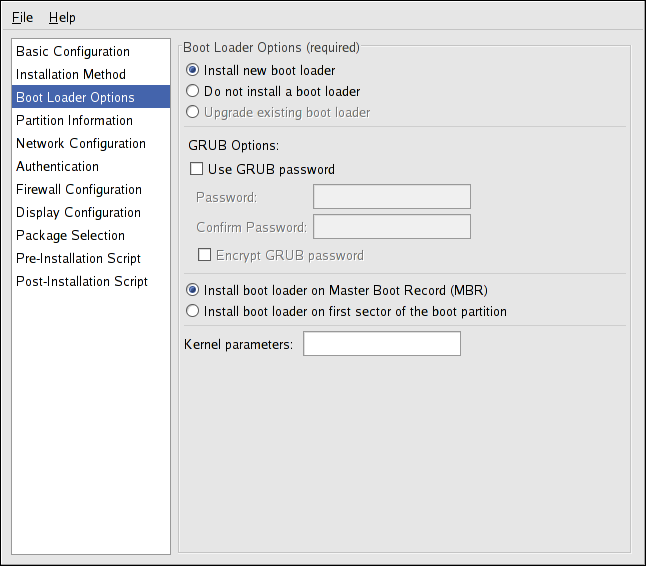Questo contenuto non è disponibile nella lingua selezionata.
2.3. Boot Loader Options
Figure 2.3. Boot Loader Options
GRUB is the default boot loader for Red Hat Enterprise Linux. If you do not want to install a boot loader, select Do not install a boot loader. If you choose not to install a boot loader, make sure you create a boot diskette or have another way to boot your system, such as a third-party boot loader.
You must choose where to install the boot loader (the Master Boot Record or the first sector of the
/boot partition). Install the boot loader on the MBR if you plan to use it as your boot loader.
To pass any special parameters to the kernel to be used when the system boots, enter them in the Kernel parameters text field. For example, if you have an IDE CD-ROM Writer, you can tell the kernel to use the SCSI emulation driver that must be loaded before using
cdrecord by configuring hdd=ide-scsi as a kernel parameter (where hdd is the CD-ROM device).
You can password protect the GRUB boot loader by configuring a GRUB password. Select Use GRUB password, and enter a password in the Password field. Type the same password in the Confirm Password text field. To save the password as an encrypted password in the file, select Encrypt GRUB password. If the encryption option is selected, when the file is saved, the plain text password that you typed are encrypted and written to the kickstart file. If type an already encrypted password, unselect to encrypt it.
If Upgrade an existing installation is selected on the Installation Method page, select Upgrade existing boot loader to upgrade the existing boot loader configuration, while preserving the old entries.
